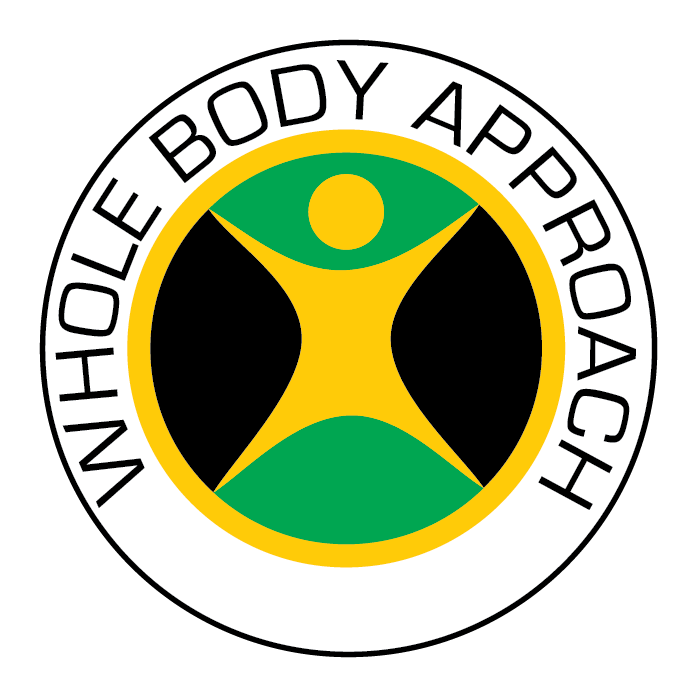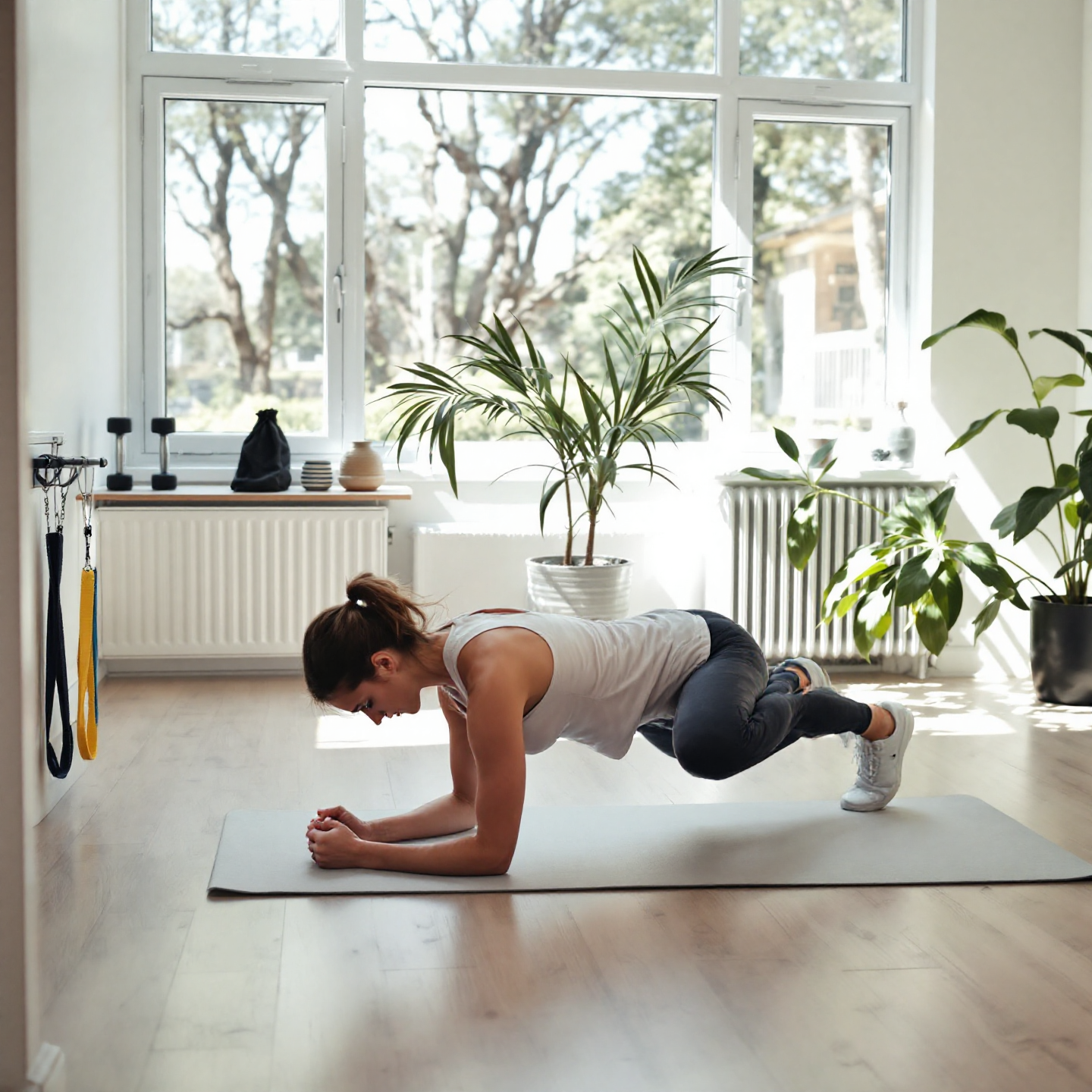Train Like a Minimalist: Can Less Really Transform Your Workout Results?
In a world constantly telling us "more is better," minimalist training offers a refreshing counterpoint. As a personal trainer working with active adults and busy parents in Chelmsford, I've seen firsthand how a strategically designed minimalist approach can deliver exceptional results while saving precious time. Whether you're juggling family responsibilities and career demands or simply want to make your fitness routine more efficient, minimalist training might be the game-changer you've been looking for.
The Power of Minimalist Exercise Philosophy
Minimalist training is built on a simple premise: focus on what truly matters and eliminate everything else. Rather than spending hours at the gym doing countless exercises, this approach emphasises high-quality, purposeful movements that deliver maximum return on your time investment1.
The concept isn't about doing less to be lazy—it's about being strategic with your training program to achieve optimal results in minimal time. Minimalist training can lead to impressive strength gains and muscle development without consuming your entire day3.
Core Benefits of Going Minimal:
Time efficiency (typically 45-60 minutes per session)3
Increased adherence due to manageable time commitment
Greater recovery between sessions
Reduced mental fatigue and burnout
More energy for other life activities
Understanding Resistance Training Volume: Less Can Be More
Traditional bodybuilding programs often recommend high volume—multiple exercises, sets, and reps for each muscle group. While this approach works for some, research shows that well-designed minimalist routines can produce comparable results with significantly less time invested3.
The key lies in understanding the "minimum effective dose" concept—the smallest training stimulus needed to trigger positive adaptations. Focusing on quality over quantity can achieve remarkable results without unnecessary volume1.
How Fewer Exercises Amplify Training Efficiency
When you reduce your exercise selection to the most effective movements, several positive things happen:
Each exercise receives more focused attention and effort
Technical proficiency improves as you master fewer movements
Recovery resources aren't spread too thin across excessive volume
Workouts become more mentally sustainable in the long-term3
Research indicates that minimal resistance training, performed as infrequently as once weekly, can effectively maintain or increase muscle strength and size—particularly in older adults3.
The Optimal Rep Range for Strength Training Success
A well-designed minimalist program typically follows a strategic rep structure. For primary compound movements, consider this effective approach:
Heavy strength-focused set: 4-6 reps
Moderate "back-off" set: 8-10 reps for hypertrophy4
This dual-rep strategy allows you to develop maximal strength and muscle growth in a single exercise without requiring multiple sets across different rep ranges4. The heavy set recruits high-threshold motor units, while the back-off set accumulates metabolic stress and volume—both critical factors for comprehensive development.
Critical technique tip: With minimalist training, execution quality becomes paramount. Since you're performing fewer total sets, each must be executed with perfect form to maximise results4.
Designing Your Training Program: Quality Over Quantity
The foundation of an effective minimalist training program centers on compound movements that deliver the most bang for your buck. These exercises engage multiple muscle groups simultaneously, making them incredibly time-efficient3.
Essential compound movements include:
Squat variations (back squat, front squat, hack squat)
Deadlift and its variations
Bench press (barbell or dumbbell)
Overhead press
Rows (barbell, dumbbell, or cable)
Pull-ups/chin-ups
By structuring your program around these movements, you can target all major muscle groups with minimal exercise selection3.
Training Frequency: Finding Your Sweet Spot
Individual factors like recovery capacity, schedule constraints, and training goals play important roles in minimalist training frequency. However, most people find success with 2-4 sessions per week1.
A popular approach is to structure training around these key templates:
2 days/week: Full-body workouts
3 days/week: Full-body or upper/lower split
4 days/week: Upper/lower or push/pull/legs split
Each approach can be effective—the best choice depends on your specific circumstances and preferences. The critical factor is consistency and adherence, which are often easier to maintain with a minimalist approach3.
The Squat and Deadlift: Cornerstones of Minimalist Results
Certain exercises deliver exceptional return on investment in minimalist training. The squat and deadlift stand at the top of this list, as they engage the largest muscle groups in your body while triggering substantial hormonal responses3.
When selecting squat variations for a minimalist program, consider time efficiency. Machine-based options like the hack squat can reduce warm-up time significantly compared to free-weight alternatives:
"With barbell back squats, it'll sometimes take me half an hour just to get all my warm-up sets done. Whereas with the hack squat, I'll just hit two or maybe three quick warm-up sets and then I'm doing my working sets within five to ten minutes."4
Conventional, sumo, or trap bar variations offer excellent benefits for deadlifts. Choose based on your body proportions and comfort with the movement pattern.
The Leg Press Alternative: Maximising Lower Body Development
While squats and deadlifts stimulate lower body development, the leg press is an excellent supplementary or alternative movement in a minimalist program. Benefits include:
Reduced technical demands compared to free-weight squats
Ability to safely train to muscular failure
Targeted quadriceps emphasis with less lower back stress
Easier load progression for consistent overload4
In a minimalist approach, Romanian deadlifts or dumbbell step-ups work exceptionally well for hamstring development. The latter provides excellent unilateral benefits for both quadriceps and glutes4.
Managing Training Volume While Maximising Recovery
One of the primary benefits of minimalist training is enhanced recovery. By reducing overall training volume while maintaining intensity, you create an optimal environment for adaptation1.
Recovery isn't just about physical rest—it encompasses:
Sleep quality and duration
Nutritional support
Stress management
Mental freshness
As noted in the research, "progress isn't made in the gym; it's made in your recovery periods"1. This becomes particularly important for those over 40, where recovery capacity naturally diminishes with age3.
Supersets: The Minimalist's Secret Weapon
To further enhance efficiency without sacrificing effectiveness, supersets and giant sets become valuable tools in the minimalist's arsenal. These techniques involve performing multiple exercises back-to-back with minimal rest, delivering several benefits:
Reduced total workout time (25-50% less time with supersets)3
Increased work density and cardiovascular stimulus
More efficient use of equipment in busy gym settings
Enhanced mental focus through constant engagement
The most effective superset combinations typically pair antagonistic muscle groups (push/pull combinations) or completely unrelated movements (upper/lower pairings)3.
Real-World Results: Transformations Through Minimalist Methods
Minimalist training isn't just theoretical—it delivers tangible results for real people with busy lives. Take James, a 42-year-old father of three who switched from a traditional 5-day split to a 3-day minimalist approach. After six months, he maintained his muscle mass and increased his strength on key lifts while reclaiming nearly five hours of weekly time.
Consider Sarah, a 36-year-old executive struggling with consistency in her previous high-volume routine. After transitioning to a minimalist program focused on progressive overload with compound movements, she finally broke through her strength plateaus while reducing her gym time by 40%.
The common thread among successful minimalist lifters is their commitment to intensity and execution quality. As Jeff Nippard notes, "If you're going to do a lower quantity of work, you need to ensure that that work is high quality. This means you need to execute each and every set as close to perfectly as possible."5
Warming Up Efficiently: Minimising Preparation Time
A significant time-saving strategy for minimalist training involves streamlining your warm-up process. Rather than extended warm-up protocols, consider this efficient approach:
3-5 minutes of light cardio (treadmill, bike, rower)
A few dynamic mobility movements for the joints involved
1-2 light warm-up sets for your first exercise5
This focused approach prepares you for productive training without wasting valuable time that could be better spent on your working sets or recovery5.
Progressive Overload: The Non-Negotiable Element
Regardless of training style, progressive overload remains essential for continued progress. This principle becomes even more critical in minimalist training, as you have fewer total sets to drive adaptation.
Effective methods for progressive overload include:
Increasing weight lifted (most direct method)
Adding repetitions with the same weight
Improving technical execution quality
Reducing rest periods between sets
Increasing time under tension (slower tempos)
Remember that progression should be strategic and incremental, particularly for those over 40, where injury prevention becomes increasingly important3.
Conclusion: Embracing the Minimalist Advantage
Minimalist training offers a powerful alternative to traditional high-volume approaches, especially for those with demanding schedules and multiple life responsibilities. By focusing on compound movements, strategic intensity, and efficient programming, you can achieve remarkable results without sacrificing hours in the gym.
The science supports this approach—even minimal resistance training can produce significant strength gains and physiological benefits when properly executed3. From cardiovascular health improvements to increased lean muscle mass, the minimalist approach delivers comprehensive fitness benefits in a fraction of the time.
Whether you're a parent juggling family responsibilities, a professional with limited schedule flexibility, or simply someone seeking a more sustainable approach to fitness, minimalist training provides a viable path to your goals. Remember that consistency ultimately trumps perfection; a minimalist program you can maintain will always outperform an "optimal" program you can't stick with.
FAQs About Minimalist Training
How much exercise should I include in a minimalist workout?
A truly minimalist workout typically includes 4-7 exercises per session, focusing primarily on compound movements that engage multiple muscle groups simultaneously4. This approach maximises efficiency while still providing comprehensive development.
Can I build significant muscle with minimalist training?
Yes, you can build muscle with a minimalist approach. A well-designed minimalist program can achieve the key factors for hypertrophy—progressive overload, sufficient volume, and adequate protein intake.
How long should my minimalist workouts take?
Effective minimalist workouts typically last 45-60 minutes, including a warm-up3. However, some highly efficient protocols, designed with supersets and strict rest periods, can be completed in as little as 30-40 minutes.
Is minimalist training suitable for beginners?
Minimalist training can be excellent for beginners, as it emphasises mastering fundamental movement patterns before adding complexity. The focused nature helps newcomers develop proper technique on key exercises rather than being overwhelmed by excessive variety5.
How often should I change my minimalist routine?
Program changes should be driven by progress, not arbitrary timelines. If you consistently progress on your minimalist routine, there's little reason to change it significantly. Small modifications every 6-8 weeks can help prevent staleness while maintaining the core effective elements3.
Can I do cardio with minimalist strength training?
Yes, minimalist strength training pairs well with strategic cardio. Consider 2-3 brief, intense cardio sessions (15-20 minutes) per week, preferably on non-training days or separated from strength work by several hours to minimise interference effects2.
Citations:
https://www.strengthmadesimple.com/blog/2019/2/12/the-benefits-of-minimalist-training
https://westchesterfit.com/blogs/effective-home-workouts-for-busy-parents-no-gym-required/
https://jeffnippard.com/blogs/news/the-best-science-based-minimalist-workout-plan-under-45-mins
https://jeffnippard.com/blogs/news/how-to-train-like-a-minimalist-more-gains-in-less-time
https://laymansfitness.com/blog/a-minimalist-exercise-routine-that-works
https://www.healthline.com/health/fitness/benefits-of-strength-training
https://www.puregym.com/blog/quick-and-efficient-workouts-for-busy-mums/
https://timeforyou.cleaning/uk/articles/post/minimalist-workouts-for-busy-people
https://dailyburn.com/life/fitness/fitness-minimalist-workout/
https://train.fitness/personal-trainer-blogs/minimalist-strength-training
https://upstrength.co.uk/blogs/f/fit-fitness-into-your-busy-life-the-art-of-minimalist-workouts
https://www.thedailybeast.com/the-busy-persons-guide-to-becoming-a-fitness-minimalist/
https://ablythecoach.com/move-your-body-minimalist-fitness-for-maximal-well-being/
https://t-nation.com/t/the-ultimate-minimalist-training-plan/284507
https://www.strongfirst.com/community/threads/recommend-me-a-minimalist-barbell-program.6563/
https://strongeryoupt.com/minimal-equipment-squat-and-deadlift-workouts/
https://www.dango.co/blog/how-to-train-like-a-minimalist-more-results-in-less-time
https://www.reddit.com/r/minimalism/comments/fugizi/any_weightlifters_here_with_minimalist_routines/
https://empire-barbell.com/2023/06/17/how-i-got-strong-as-sh-on-a-minimalist-program/
https://t-nation.com/t/questions-for-those-who-train-as-a-minimalist/274236
https://www.endur.com/blogs/health-tips/functional-fitness-for-busy-parents
https://www.reddit.com/r/minimalist/comments/hti3id/minimalist_training_how_many_of_you_do_it/
https://www.girlsgonestrong.com/blog/articles/fit-in-your-workout-as-a-busy-mom/
https://www.gymaholic.co/articles/benefits-of-minimalist-training-more-gains-in-less-time
https://www.builtstrength.com.au/exercise-methodology/minimalist-strength-training/
https://www.menshealth.com/uk/building-muscle/train-smarter/a62893688/minimalist-training/
https://www.healthline.com/health/fitness/fit-it-in-mini-workouts
https://www.menshealth.com/uk/building-muscle/train-smarter/a63136085/single-set-training/
https://blog.calimove.com/2023/09/29/the-minimalist-workout-guide/
https://thenaturaltransformer.com.au/blogs/blog/training-fitness-tips-for-busy-parents

